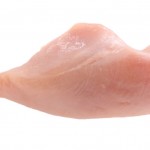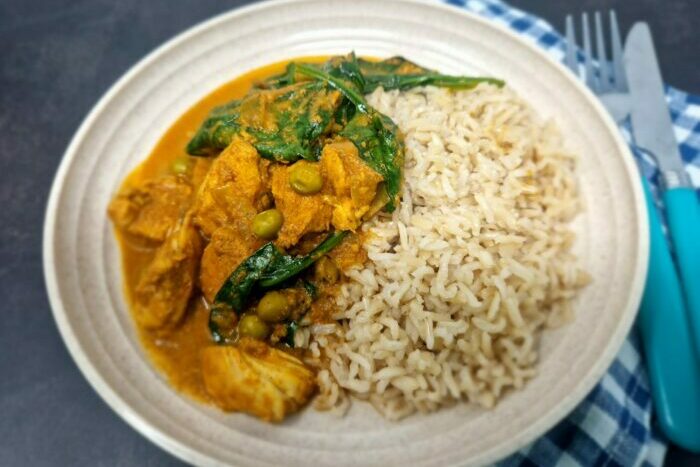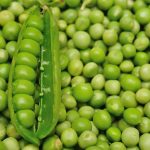This recipe is a real winner - a curry mild enough for even the fussiest of eaters, but with so much flavour! We’ve added peas and spinach to up the veg power, but you can throw in whatever tinned or frozen veg you have.
So simple to put together - no pre-prep required, just throw the ingredients into the slow cooker and leave it to do its thing. Perfect!
Skills Check
Follow a recipe; follow food safety & hygiene rules; tidy away; cut using bridge/claw technique safely; crush garlic; use a tin opener safely.
Equipment
Slow cooker, chopping board, sharp knife, garlic press, measuring spoons, tin opener.
Allergens
(Please note the allergens listed are indicative only. Allergens vary depending on brand; check the labels on the products you use)
Ingredients (serves 4):
- 4 chicken breasts, cubed
- 400ml can of light (redued fat) coconut milk
- 2 tbsp tomato puree
- 1 tsp ground coriander
- 1 tsp ground turmeric
- 2 tbsp curry powder
- 1 tsp chilli powder
- 1 onion, chopped
- 4 garlic cloves, crushed
- 1 tsp ground ginger
- 1/2 tsp Chinese 5 spice powder
- 400g tin garden peas, drained
- 100g spinach leaves
Method
- Place all of the ingredients, except the peas and spinach, into the slow cooker and stir.
- Cook on high for 4 hours, adding the peas and spinach for the last five minutes to heat through.
So thinking about mild chicken curry ...

Coconut milk is high in fat, and in particular saturated fat which, in excess, is not good for our heart health. Reduced fat (light) options are available, but these will still contain saturated fats, so keep the portion size sensible.
Vegetables are so good for us! Low in fat, sugar and calories and high in vitamins and minerals.
Nutritional Information
per 236g serving
% of an adult's reference intake
Typical values per 100g: Energy 514kJ / 122kcal
Notes
A traffic light system is used on nutrition labels to make it easier to see which foods and drinks are lower in calories, fat, sugar and salt. Try and choose more ‘greens’ and ‘ambers’ and fewer ‘reds’, and stick to smaller portions of ‘reds’.
Just because a recipe or a food has a red traffic light doesn’t mean you shouldn’t eat it. Understanding why a food or recipe might have a red light can be helpful. For example oily fish is high in total fat and so any recipe containing oily fish is likely to be ‘red’ for fat. But it is recommended that we eat oily fish at least once a week because the type of fat it contains is beneficial for our health.
% Reference Intakes are also shown. Reference Intakes are guidelines about the approximate amount of particular nutrients and energy required for a healthy diet (based on an average-sized woman doing an average amount of physical activity). Most children will require less than these Reference Intakes. The contribution of one serving of a food or drink to the Reference Intake for each nutrient is expressed as a percentage.




